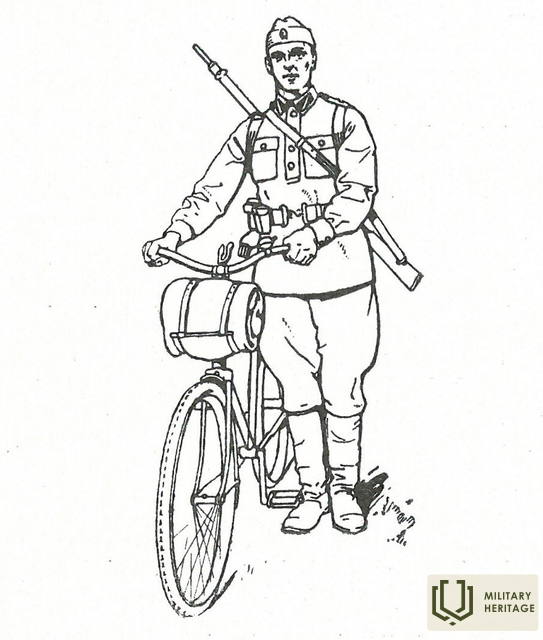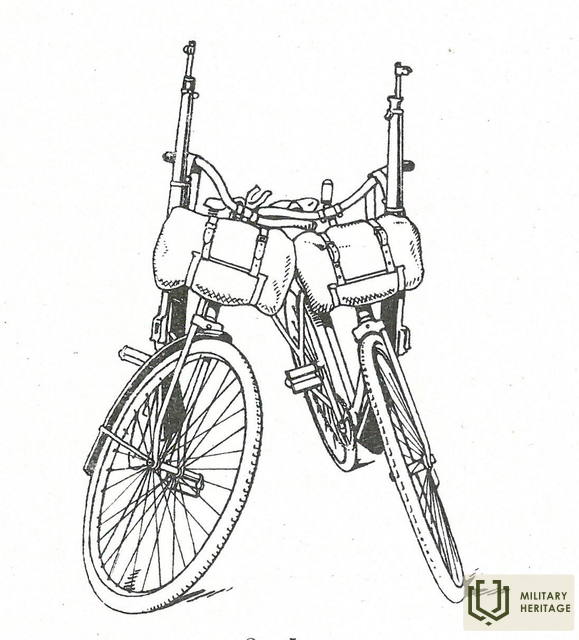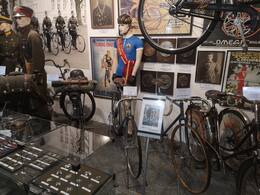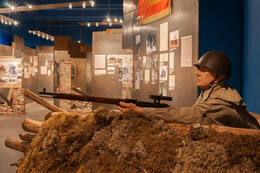Specialūs nurodymai dviratininkų sveikatos priežiūrai
Dviratininkų rengimo nuostatuose nurodytos rekomendacijos skirtos Latvijos kariuomenės dviratininkų rengimui. Rekomendacijos daugiausia skirtos karių sveikatos klausimams.
Specialios dviratininkų sveikatos priežiūros instrukcijos:
Pasibaigus naujų karių mokymo laikotarpiui, gydytojas privalo atlikti tų karių, kurie negali toleruoti ilgų kelionių, sveikatos patikrinimą. Jei, gydytojo nuomone, minėti kariai netinka dviračių ešelonui ir jei jie negali būti naudojami motorizuotam ešelonui, jie turi būti perkelti į kitus dalinius.
Tinkama sveikatos priežiūra pagerina dviračių sporto komandų rezultatus
Atliekant judesį, komanda dėl būtino palengvėjimo aprangoje ant petnešų turėtų būti duota kuo anksčiau judesio pradžioje.
Dviratininkų apranga ir diržai turi būti pritaikyti taip, kad netrukdytų organizmo kraujotakai.
Dažnesnis šalto dušo prausimasis prieš ir po važiavimo apsaugo kojas ir klubus nuo trinties (važiuojant šiltu oru).
Draudžiama vartoti alkoholį prieš eitynes, eitynių metu, taip pat iškart po jų pabaigos.
Nereikėtų pradėti žygio nei tuščiu, nei pilnu skrandžiu.
Raumenų mėšlungio galima išvengti masažu. Mėšlungis rankose ir kojose atsiranda, jei dviratininkas dar nėra pakankamai treniravęsis, jei dviračio balnelis netinkamai sumontuotas, jei dviratininkas ilgai laiko rankinį stabdį arba nuolat laiko vairą toje pačioje vietoje, jei dviratininko drabužiai yra aptempti ir nepakankamai patogūs. Per ankštos kelnės ar apatiniai sukelia aštrų kelių ir kojų raumenų skausmą.
Jei dviratininkas viršija savo ištvermės ribas, jis patiria padažnėjusį ir netolygų širdies plakimą, taip pat pasunkėja kvėpavimas.
Jei dviratininkas jaučia bendrą silpnumą su šaltkrėčiu, šaltu prakaitu, išblyškusiu veidu, pasunkėjusiu kvėpavimu, uždusimo jausmu ir dažnu bei netolygiu širdies plakimu, dviratininką reikia paguldyti, atsegti drabužius ir duoti jam maisto su kava ar arbata; po trumpo poilsio dviratininko prarastos jėgos sugrįš.
Saulės smūgio atvejais reikia atsižvelgti į Vidaus tarnybos nuostatuose nurodytas nuostatas.
Ypač atsargiai reikia važiuoti dviračiu plaukimo pertraukų metu. Plaukioti leidžiama tik tada, kai dviratininkas pakankamai atvėsta ir jo širdies ritmas normalizuojasi.
Dviratininkų mokymo nuostatai. Ryga: Kariuomenės štabo Mokymo departamentas, 1940 m.
Susijusi laiko juosta
Susijusios vietos
Karinių motociklų ekspozicija Saulkrastų dviračių muziejuje
Dviračių muziejus yra Saulkrastuose, netoli A1 greitkelio ir Pabaži geležinkelio stoties, šalia Baltosios kopos. Muziejaus kolekciją sudaro techniškai įdomiausi dviračių raidos istorijos pavyzdžiai Latvijoje. Tai didžiausia dviračių kolekcija Baltijos šalyse, kurioje yra apie 60 Latvijoje pagamintų ir naudotų dviračių, įskaitant armijos tipo dviračius. XX amžiaus pradžioje daugelis armijų pradėjo plačiai naudotis dviračių prieinamumu ir privalumais. Dėl jų mobilumo buvo suformuoti specialūs dviračių daliniai. Dviračių daliniai galėjo lengviau rinkti žvalgybos informaciją ir pradėti netikėtus išpuolius, be to, jie buvo mobilesni nei įprasti pėstininkai, kai reikėjo vykdyti operacijas plačioje teritorijoje. Po Pirmojo pasaulinio karo Latvijos armija taip pat turėjo dviračių dalinių, kurie naudojo Latvijoje pagamintus armijos dviračius. Kiekvienas tokiame dviračių dalinyje tarnavęs kareivis turėjo atitikti griežtus reikalavimus. Būtina gera ištvermė, regėjimas ir klausa, taip pat sveika širdis ir plaučiai. Jie negalėjo sverti mažiau nei 80 kg, o jų ūgis turėjo būti 165–180 cm. Latvijos armijoje buvo laikomasi standarto, kad gerai apmokytas dviratininkas per dieną turėtų įveikti 80–100 km, o priverstinėmis sąlygomis – iki 150 km. Žiemą, kai nebuvo galima naudoti dviračių, buvo naudojamos slidės. Dviračių būrio kareivis turėjo sugebėti per dieną nučiuožti 50–60 km. Daugelis dviračių būrių kareivių vėliau tapo profesionaliais sportininkais.
Kasmet sulaukiame apie 5000 lankytojų.
Latvijos karo muziejus
Latvijos karo muziejus yra įsikūręs senamiestyje, netoli Laisvės paminklo, istoriniame gynybos pastate, vadinamame „Parako bokštu“. Muziejuje yra 11 eksponatų. Čia eksponuojami įvairūs ginklai, dokumentai, uniformos, apdovanojimai, ženkleliai ir kiti daiktai, pasakojantys apie kasdienį kareivio gyvenimą kare. Latvijos karo muziejus yra vienas seniausių muziejų Latvijoje. Jo ištakos siekia Pirmąjį pasaulinį karą. Muziejaus kolekciją daugiausia sudarė asmeniniai kareivių daiktai arba mūšio laukuose rasti daiktai. Latvijai atgavus nepriklausomybę, pagrindinis muziejaus tikslas tapo sukurti ekspoziciją apie Latvijos karo istoriją ir aktyvų gyventojų vaidmenį saugant savo žemę. 1937 m. muziejus buvo išplėstas ir techniškai buvo vienas moderniausių tuo metu Europoje. Parako bokštas buvo vienas iš Rygos įtvirtinimų bokštų. Kai kurie įrodymai siekia 1330 m., kai jis buvo minimas kaip „Smėlio bokštas“. Bokštas buvo sugriautas 1621 m., kai Rygą apgulė Švedijos armija. Tačiau 1650 m. buvo pastatytas naujas bokštas parakui ir ginklams laikyti. Nugriovus miesto įtvirtinimus, Parako bokštas išlieka vienu svarbiausių Rygos gynybos sistemos įrodymų.








